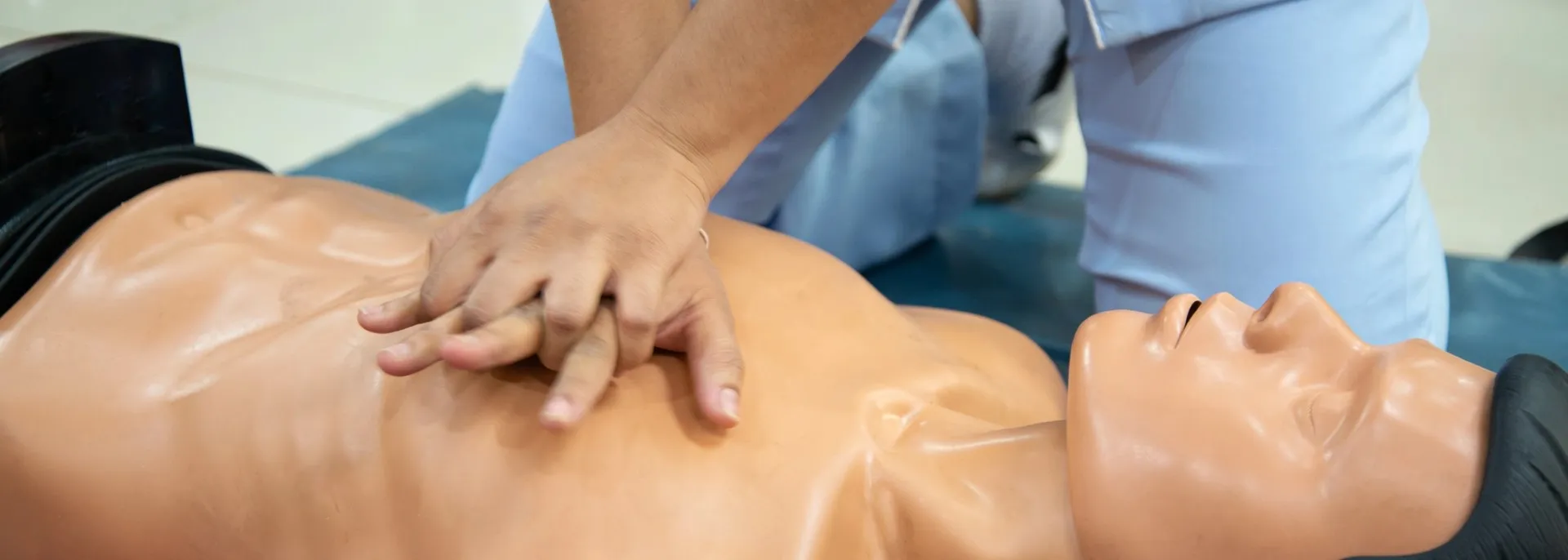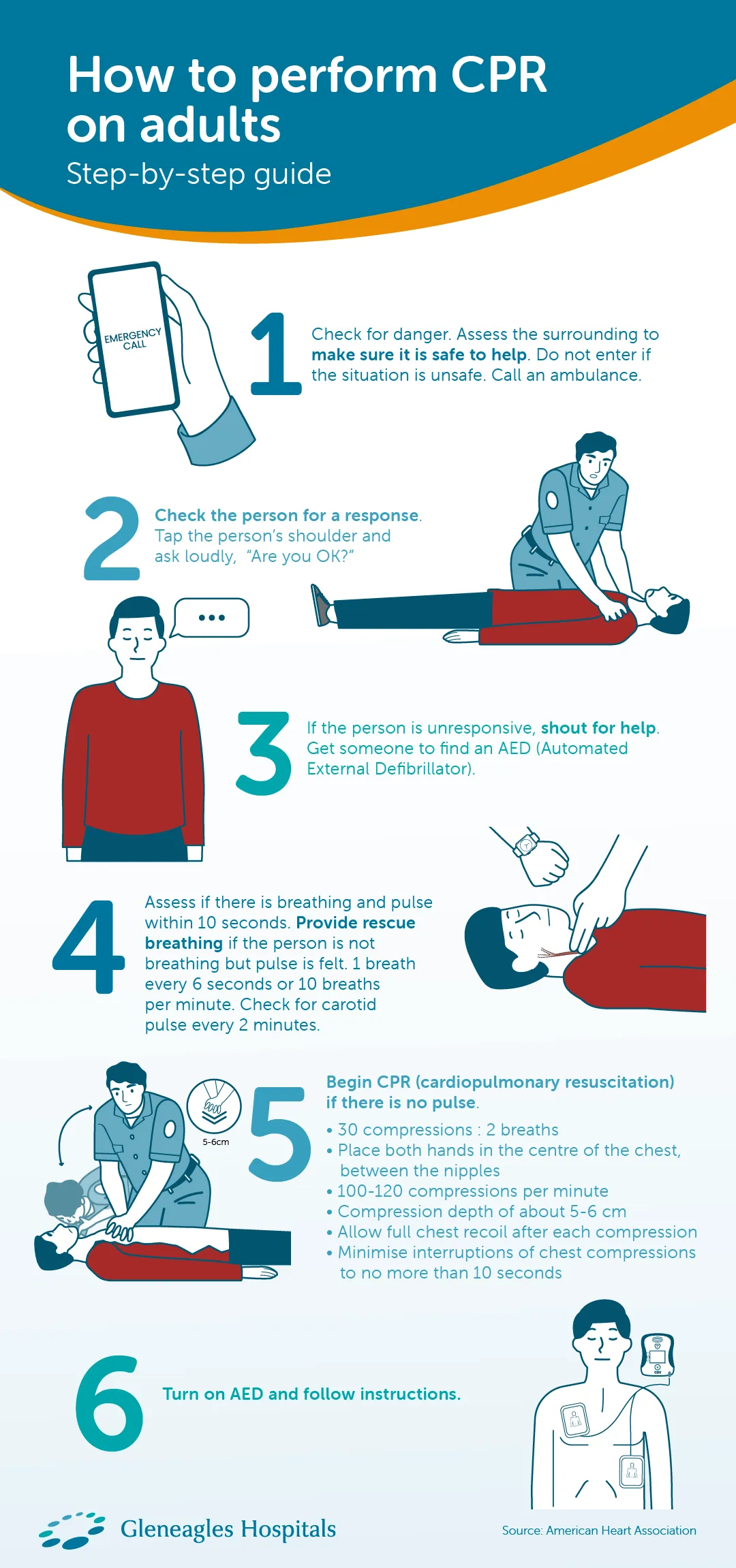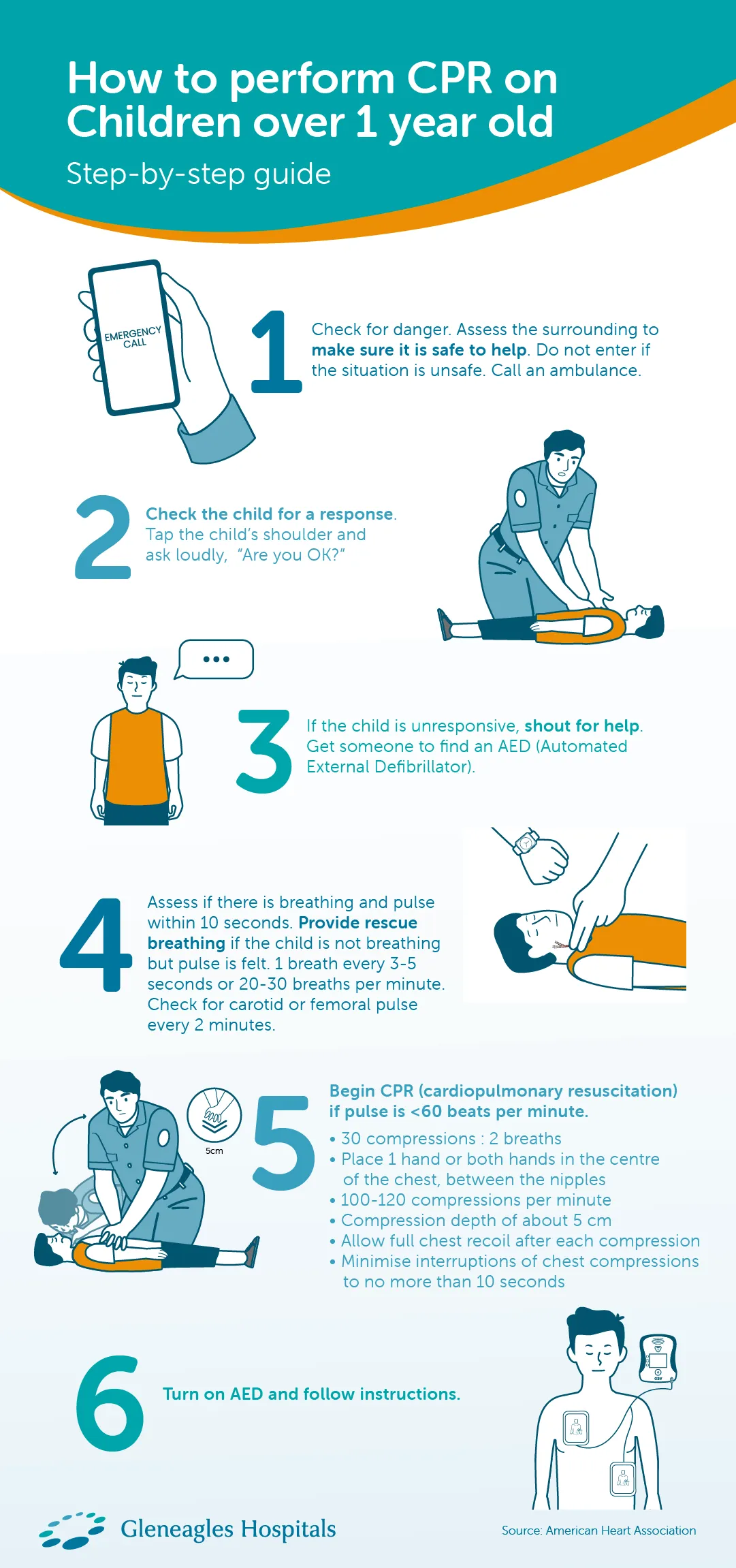Understanding CPR
Cardiopulmonary resuscitation (CPR) is an emergency procedure that can potentially save a person's life in situations where their heart and/or breathing ceases (cardiac arrest).

When an individual experiences cardiac arrest, their heart stops beating, leading to the inability to pump blood to vital organs such as the brain and lungs. Without prompt intervention, death can occur within minutes.
CPR save lives!
CPR involves performing chest compressions that mimic the pumping action of the heart, effectively maintaining blood circulation throughout the body. Consistent and adequate chest compressions are crucial in maintaining blood circulation and increasing the chances of survival during a cardiac arrest.
Knowing the basics of CPR for adults can make a life-saving difference. Even a simplified, hands-only version of CPR can significantly increase the chances of survival, potentially doubling or tripling them.
Surprisingly, less than 50% of people who experience cardiac arrest outside of a hospital receive CPR from someone nearby. It is important to note that 4 out of 5 cardiac arrests happen at home, meaning that the person you could potentially save with CPR is more likely to be someone you know and care about rather than a stranger.
Be ready to perform high-quality CPR when it matters most. Your actions can save lives!
Step-by-step guide: How to perform CPR on adults

- Check for danger. Assess the surrounding to make sure it is safe to help. Do not enter if the situation is unsafe. Call an ambulance.
- Check the person for a response. Tap the person’s shoulder and ask loudly, “Are you OK?”
- If the person is unresponsive, shout for help. Get someone to find an AED (Automated External Defibrillator).
- Assess if there is breathing and pulse within 10 seconds. Provide rescue breathing if the person is not breathing but pulse is felt. 1 breath every 6 seconds or 10 breaths per minute. Check for carotid pulse every 2 minutes.
- Begin CPR (cardiopulmonary resuscitation) if there is no pulse.
- 30 compressions : 2 breaths
- Place both hands in the centre of the chest, between the nipples
- 100-120 compressions per minute
- Compression depth of about 5-6 cm
- Allow full chest recoil after each compression
- Minimise interruptions of chest compressions to no more than 10 seconds
- Turn on AED and follow instructions.
Step-by-step guide: How to perform CPR on children over 1 year old

- Check for danger. Assess the surrounding to make sure it is safe to help. Do not enter if the situation is unsafe. Call an ambulance.
- Check the child for a response. Tap the child’s shoulder and ask loudly, “Are you OK?”
- If the child is unresponsive, shout for help. Get someone to find an AED (Automated External Defibrillator).
- Assess if there is breathing and pulse within 10 seconds. Provide rescue breathing if the child is not breathing but pulse is felt. 1 breath every 3-5 seconds or 20-30 breaths per minute. Check for carotid or femoral pulse every 2 minutes.
- Begin CPR (cardiopulmonary resuscitation) if pulse is <60 beats per minute.
- 30 compressions : 2 breaths
- Place 1 hand or both hands in the centre of the chest, between the nipples
- 100-120 compressions per minute
- Compression depth of about 5 cm
- Allow full chest recoil after each compression
- Minimise interruptions of chest compressions to no more than 10 seconds
- Turn on AED and follow instructions.
Step-by-step guide: How to perform CPR on infants under 1 year old

- Check for danger. Assess the surrounding to make sure it is safe to help. Do not enter if the situation is unsafe. Call an ambulance.
- Check for infant’s responsiveness. Tap the bottom of the infant’s foot.
- If the infant is unresponsive, shout for help. Get someone to find an AED (Automated External Defibrillator).
- Assess if there is breathing and pulse within 10 seconds. Provide rescue breathing if the infant is not breathing but pulse is felt. 1 breath every 3-5 seconds or 20-30 breaths per minute. Check for brachial pulse every 2 minutes.
- Begin CPR (cardiopulmonary resuscitation) if pulse is <60 beats per minute.
- 30 compressions : 2 breaths
- Place 2 fingers in the centre of the chest, below the nipple line
- 100-120 compressions per minute
- Compression depth of about 4 cm
- Allow full chest recoil after each compression
- Minimise interruptions of chest compressions to no more than 10 seconds
- Turn on AED and follow instructions.
Step-by-step guide: How to perform hands-only CPR
- Check for danger. Assess the surrounding to make sure it is safe to help. Do not enter if the situation is unsafe. Call an ambulance.
- Check the person for a response. Tap the person’s shoulder and ask loudly, “Are you OK?”
- If the person is unresponsive, assess breathing within 10 seconds and start CPR.
- Position the heel of one hand in the centre of the person's chest, directly over the sternum (breastbone) and between the nipples.
- Place the heel of your other hand on top of the first hand, interlacing the fingers of your top hand with the fingers of the bottom hand. Ensure that your shoulders are directly above your hands.
- Start pushing down firmly (5 to 6 cm), using the weight of your body. Keep your arms straight during the compressions.
- Repeat the compressions continuously, aiming for a target rate of 100 to 120 compressions per minute.
- Never stop compressions for more than 10 seconds.
- Continue until an ambulance arrives.
Make an appointment at Gleneagles Hospitals
If you or someone you know is experiencing a medical emergency or major trauma, call for an ambulance immediately or head straight to the nearest Gleneagles Hospital Accident and Emergency (A&E) department for immediate medical attention.
Remember, every second counts in emergency situations! The team of skilled emergency physicians, nurses, and support staff is available 24/7 to provide immediate care and support.



